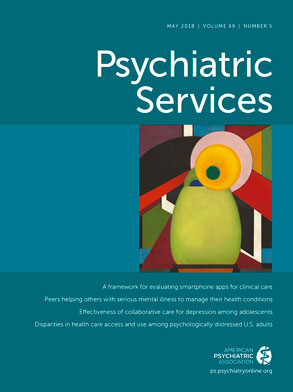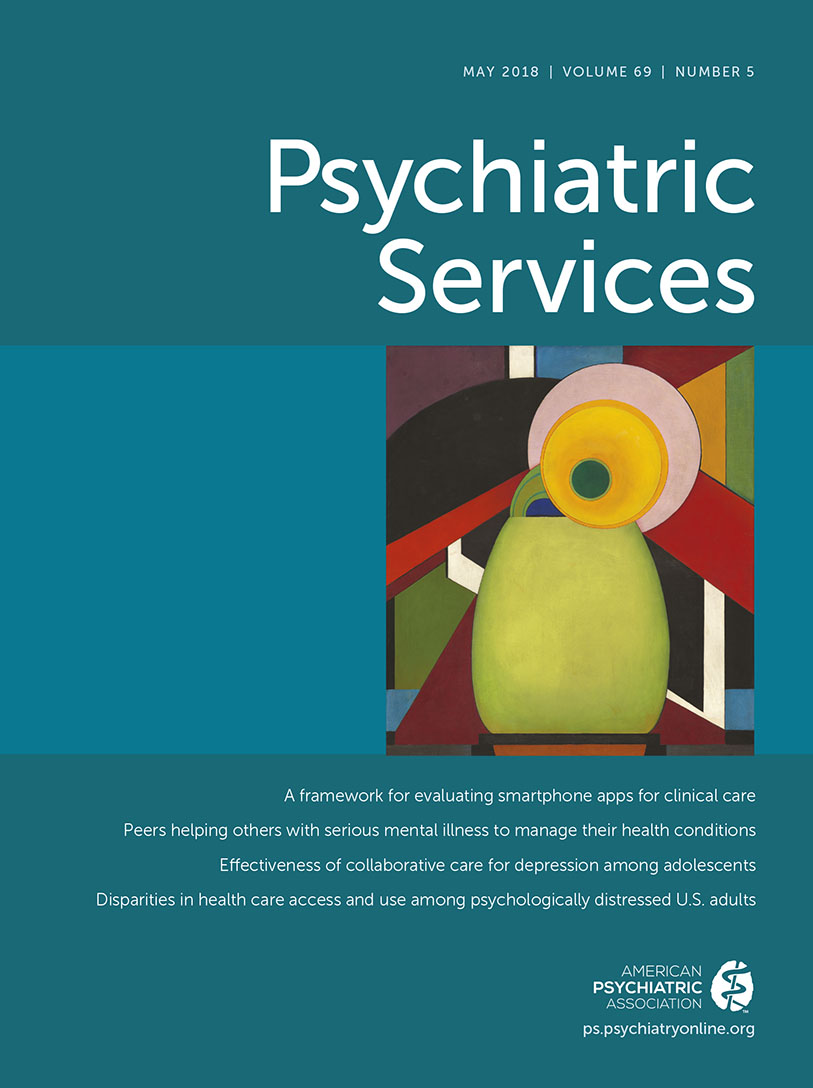During the past 30 years, a vast amount of research has described mental illness stigma, its consequences, and corresponding intervention strategies (
1). However, many persons with mental disorders are members of multiple stigmatized social groups, and focusing on mental illness stigma alone might not only fail to reflect their stigma experiences but also limit the effectiveness of interventions. Consider Terrell, a 22-year-old black man who experienced the first of many psychotic episodes at the age of 15, which forced him to drop out of high school. He started to live on the street when he was 18 and was incarcerated for theft twice. In line with intersectionality theory (
2), public perception, resulting attitudes, and discrimination toward Terrell depend not only on his status as a person with mental illness but also on race, lack of education, homelessness, and criminal behavior—as well as the interactions of these factors. The resulting complexities have important implications for stigma change, which are the focus of this Open Forum.
Mental Illness Stigma: Intersectional Effects
Intersectionality considers the meaning and consequences of membership in multiple stigmatized social groups. It was initially developed within feminist psychology to describe oppression experienced by African-American women, who had been overlooked by research that traditionally studied gender and race separately (
2). Disadvantage experienced by black women is sometimes similar to the experience of black men or white women, sometimes the combination of both, and sometimes unique. Scholars therefore called for diverse interventions targeting both racial and gender discrimination rather than one-size-fits-all approaches. Disadvantage experienced by people with mental illness might similarly differ depending on membership in multiple stigmatized social groups.
Disadvantage among people with mental illness can be understood in terms of public stigma, namely stereotypes, prejudice, and discrimination among members of the general public (
3). Stereotypes are misconceptions about members of a social group that guide perception, attitudes, and discrimination. They are grounded in a perceived difference between oneself and others that stimulates the discreditation of people outside the perceived majority (
4). Persons with mental illness are typically judged as weak, held responsible for their struggles, and treated unfairly, leading to discrimination that undermines goals related to education, health care, employment, and independent living (
5).
If perceived difference is its foundation, public stigma might be higher toward members of multiple stigmatized social groups. Accordingly, Terrell is perceived as different not only because he has a mental illness but because he is black, homeless, uneducated, and has a criminal background. Double-disadvantage theory (
6,
7) describes an accumulation of disadvantage with an increasing number of stigmatized identities. Accordingly, compared with people with mental illness who are not multiply stigmatized, as stereotypes about Terrell accumulate, he is perceived as increasingly different from the majority, and as a result experiences increased disadvantage. For example, employers could be even more reluctant to hire him than they might be had he been associated with fewer stigmatized categories, and care providers might be more biased in their decision making (over- or underdiagnosis, involuntary hospitalization, and so on).
In other situations, given that simplicity is an integral aspect of social categorization, just a few or even just one social identity might determine public perception. This way, some person characteristics become salient and inhibit the influence of the other social identities, a phenomenon referred to as prominence (
8). Thus, depending on which identity the public perceives as most salient, people could stigmatize Terrell based on either his mental illness or his race, but not the combination of both. It is important to note that salience is not the same as visibility—while visible stigmas are indeed more likely to become salient, contextual factors and perceiver characteristics influence salience as well. For example, being black (a visible characteristic) might be a prominent factor driving public perception and discrimination in predominantly white settings compared with predominantly black settings, where mental illness could become prominent.
We believe that double disadvantage and prominence are not mutually exclusive but fluctuate depending on the number and types of intersecting social group memberships, their visibility, and contextual factors (including cultural setting and perceiver characteristics). Future research should investigate the presence of double disadvantage and prominence, their impact on public stigma, as well as the potential influence by contextual factors. In such studies, public stigma should be assessed using measures of perceived difference (measuring how different another person is perceived to be as compared with oneself) rather than instruments that assess stigma associated with a single social group membership (such as stigma toward people with mental illness).
Implications for Stigma Change
Interventions to reduce public stigma are meaningful only if they are able to reduce disadvantage experienced by all people with mental illness, whether a person is a member of multiple stigmatized social groups or not. Otherwise, disadvantage among those most affected by it will persist. In the past, advocates and scholars developed three types of intervention strategies, namely protest, education, and contact. Evidence suggests effectiveness of both education and contact-based interventions; however, effect sizes were larger for the latter (
9).
Education-based programs usually use large-scale approaches (such as media campaigns) to bust the myths surrounding mental illness. Despite wide reach at low costs, education-based interventions are limited in addressing the challenges of intersectionality. As mentioned before, one-size-fits-all approaches fail to consider the diversity of social groups—an important implication of intersectionality. Indeed, some education-based approaches might even be harmful and strengthen existing disparities. Public campaigns targeting perceived difference using normalcy messages describing persons with mental disorders as “just like everyone else” carry the risk of dividing people with mental illness into two groups: the ones who, apart from their mental illness, are perceived members of the majority group and the ones who, like Terrell, are associated with multiple stigmatized social groups. Whereas majority group members with mental illness might benefit from such approaches, people like Terrell are likely to be perceived as “too different” to ever be “normal,” which potentially increases stigma and resulting disadvantage.
Contact-based interventions aim to dismantle stereotypes and improve attitudes as well as behavior by allowing members of the general public to detect similarities between themselves and people with lived experience of mental illness. This is typically achieved by a person with mental illness presenting his or her personal recovery story to members of the general public in a group setting. To effectively break stereotypes, told stories need to promote recovery, empowerment, and the ability to attain a satisfying life. In addition, to lead to improvements in both attitudes and behavior, the established contact should be targeted, local, credible, and continuous and target specific behavioral changes (
10). Therefore, contact-based interventions are not universal but need to be adapted depending on the specific needs of the targeted stigmatized social group members and the cultural background, beliefs, attitudes, and preferences of participating community members. We believe that contact-based interventions have the ability to effectively address the implications of intersectionality (that is, multiple stigma) among persons with mental illness. Community-based participatory research teams, which include people with lived experience and community members, can best determine the needed adaptations within a certain setting. Credible facilitators who have lived experience need to match the targeted community group (by race, age, or gender, for example) and have knowledge and understanding of the concerns and needs of both groups. For example, when targeting stigmatizing attitudes and behavior among supervisors of a company, facilitators need to consider their ongoing issues and challenges as well as represent the diversity and needs of the respective employees with mental illness.
In addition to changing public stigma, intersecting social group membership might also influence group identification, stereotype perceptions, and perceived legitimacy among persons with mental illness and therefore may change self-stigma. Researchers should therefore also consider the implications of intersectionality and potential influence of intersectional effects in interventions aimed at reducing self-stigma among persons with mental illness.

